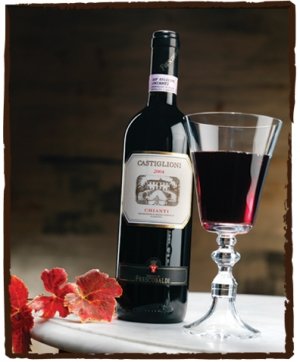Chianti is no longer just a red table wine found in a straw basket. With lands covering 1.2 million acres and nearly a third of Tuscany, this winegrowing area has been officially named the ‘big elephant.’ The rolling green hills in Chianti produces wines of different quality and taste, with variations of light/dry and bold/fruity. Much of the collective ground floor in Chianti is comprised of clay soils with mixtures of flint, limestone, sand, and tiny pebbles?ll of which contribute to the uniqueness of this wine.
There are seven sub zones within Tuscany that can call their wine Chianti, all of which are within the Tuscan provinces of Arezzo, Firenze (Florence), Pistoia, and Siena:
Colli Aretini: Produces a light to medium body Chianti which is best enjoyed young. Colli Aretini is found in the hills of Arezzo.
Colli Senesi: This is the largest Chianti sub-zone. It is found in the hills south and west of Siena and produces dry style wines.
Colli Fiorentini: All styles of Chianti are found in this hilly region around Florence, which is along the valley of the Arno and the valley of the Pesa.
Montalbano: Lush Chianti’s are found in these hills west of Florence, Pistoia and Prato.
Colline Pisane: Chianti Colline Pisane is produced in the hilly strip extending from around Casciana Terme to the southeast of Pisa.
Rufina: R?na is the smallest of the seven zones and is found to the north east of Florence. Rufina produces some of the most complex and long-lived wines in Chianti.
Frescobaldi wines from Rufina include:
Nipozzano Rufina
Nipozzano Montesodi
Classico: The Chianti Classico subzone is located south of Florence and north of Siena, covering 173,000 acres. Some of the finest Chianti’s come out of this zone, as well as the most expensive. Chianti Classico must be 80% Sangiovese and might have some white grapes in the blend. It is normally aged for 18-24 months in oak.

